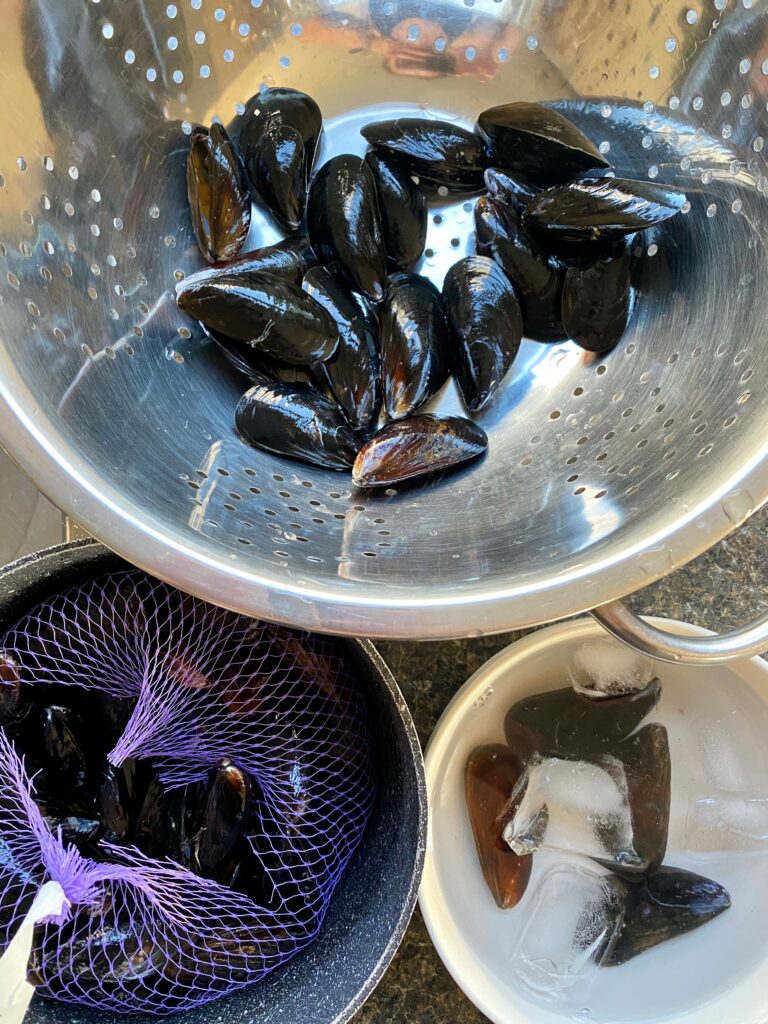Buying, Storing, Cleaning and Debearding Mussels

Mussels are one of the most underrated, affordable and easiest dishes to cook at home! Although you may be familiar with mussels since they are on the menu at most restaurants, they can be intimidating to cook for yourself. We are here to help with all the questions you have about cooking with mussels and to give you another incredible shellfish to add to your repertoire.
Mussels are incredibly cost effective (per pound they are cheaper than any meat or fish you will find) and work perfectly for a dinner party or date night in. The different flavours and broths you can combine with mussels are endless. Paired with a glass of crisp beer or wine and a crispy baguette, you really can’t go wrong!
Below we share our tips and tricks to buy, store, inspect, clean and debeard mussels.
BUYING
Although you may be able to find wild mussels in certain markets, the mussels we (and you) typically get from the grocery store or fish market are likely farmed! Don’t shy away from farmed mussels, as the mussel farms are actually beneficial to the environment. Mussels are incredible at filtering water, which in turn improves coastal water health. Farmed mussels are also grown on ropes, which means that they come to grocery stores or markets quite clean—wild mussels can house a good amount of debris from the seabed and it’s quite the process to clean them. Below we share how to clean FARMED mussels.
Have the fish monger check the harvest date BEFORE you buy the mussels, you typically don’t want them to be more than 10 days old. They are “technically” good for 14 days after harvest but we have found they start to get funky around 12 days.
Make sure the fish monger does not close the bag they are being transported in. You want them to be able to breath!

STORING
When you get home, immediately take the mussels out of the plastic bag the fish monger put them in. Place them in a bowl in your fridge and cover loosely with a damp paper towel or kitchen towel over top so they can breath. Add ice on top of the paper towel, and make sure to drain the bowl often.
It is recommended to cook mussels the same day you buy them but they will survive in the fridge for a few days if stored properly. Good mussels should look wet and smell salty like the ocean.
PREPARING
We like to inspect and clean each individual mussel.
Put your mussels into the ice cold water and swish them around using your hands or a large spoon, and let soak for 5-10 minutes. This will get rid of any debris like seaweed, sand, barnacles, or mud spots that could be on the shell. Once the mussel is clean, place it in the colander.
If you find any mussels with open shells, lightly tap that mussel, if the mussel closes up, it’s alive. If it doesn’t move, put it back into the ice cold water and re-inspect once you’re done looking at the other mussels. Discard any mussels that are cracked or haven’t closed.
DEBEARDING
The “beard” of a mussel is the clump of hair-like fibers that sprouts from the shell. Most mussels come debearded but there is usually a little bit left on a few in the pack. To remove the beard from the mussels, grab it and tug it toward the hinge of the mussel shell. You can also use a knife to gently scrape away the beard.
OUR MUSSEL RECIPES
This will be updated as we post other recipes:
